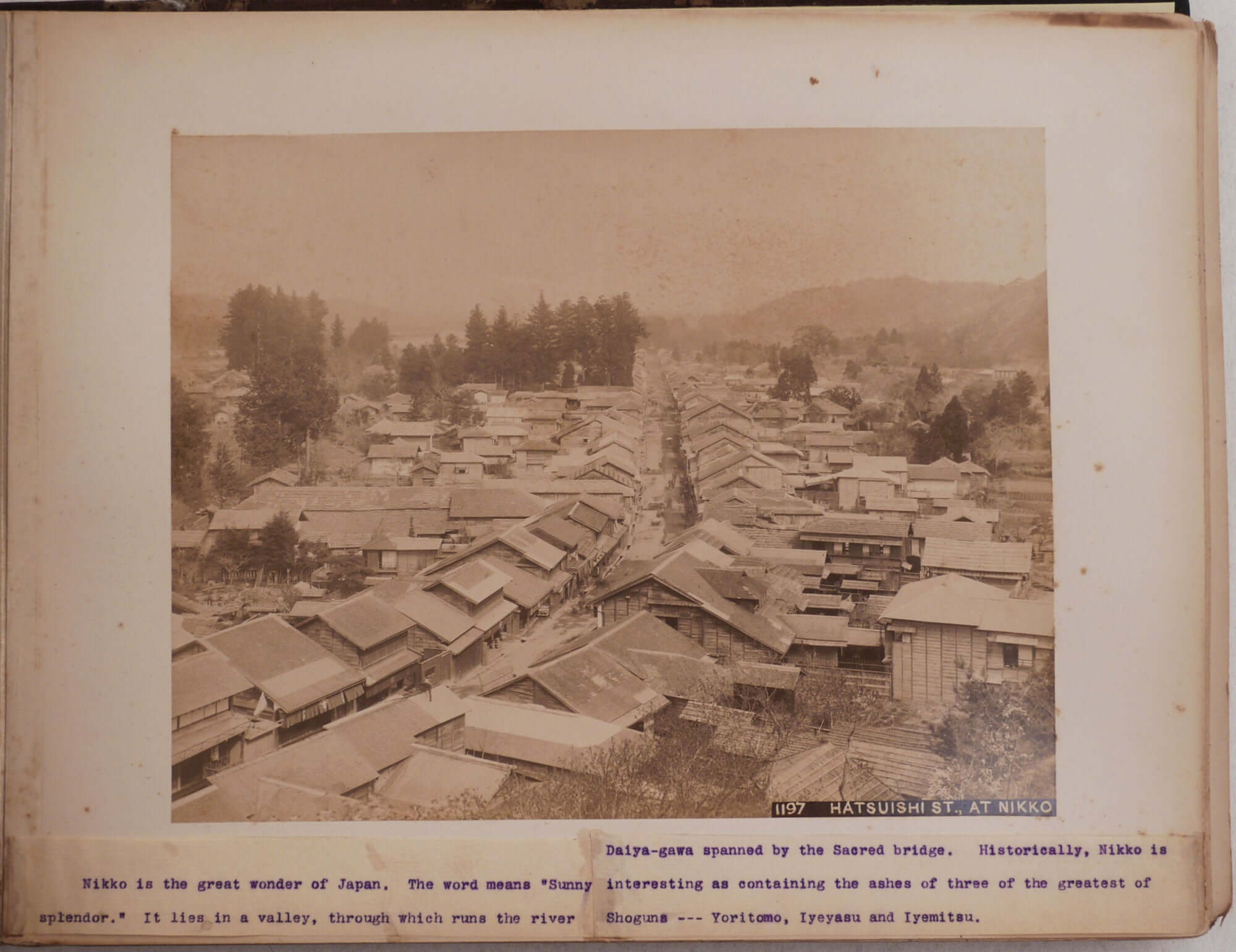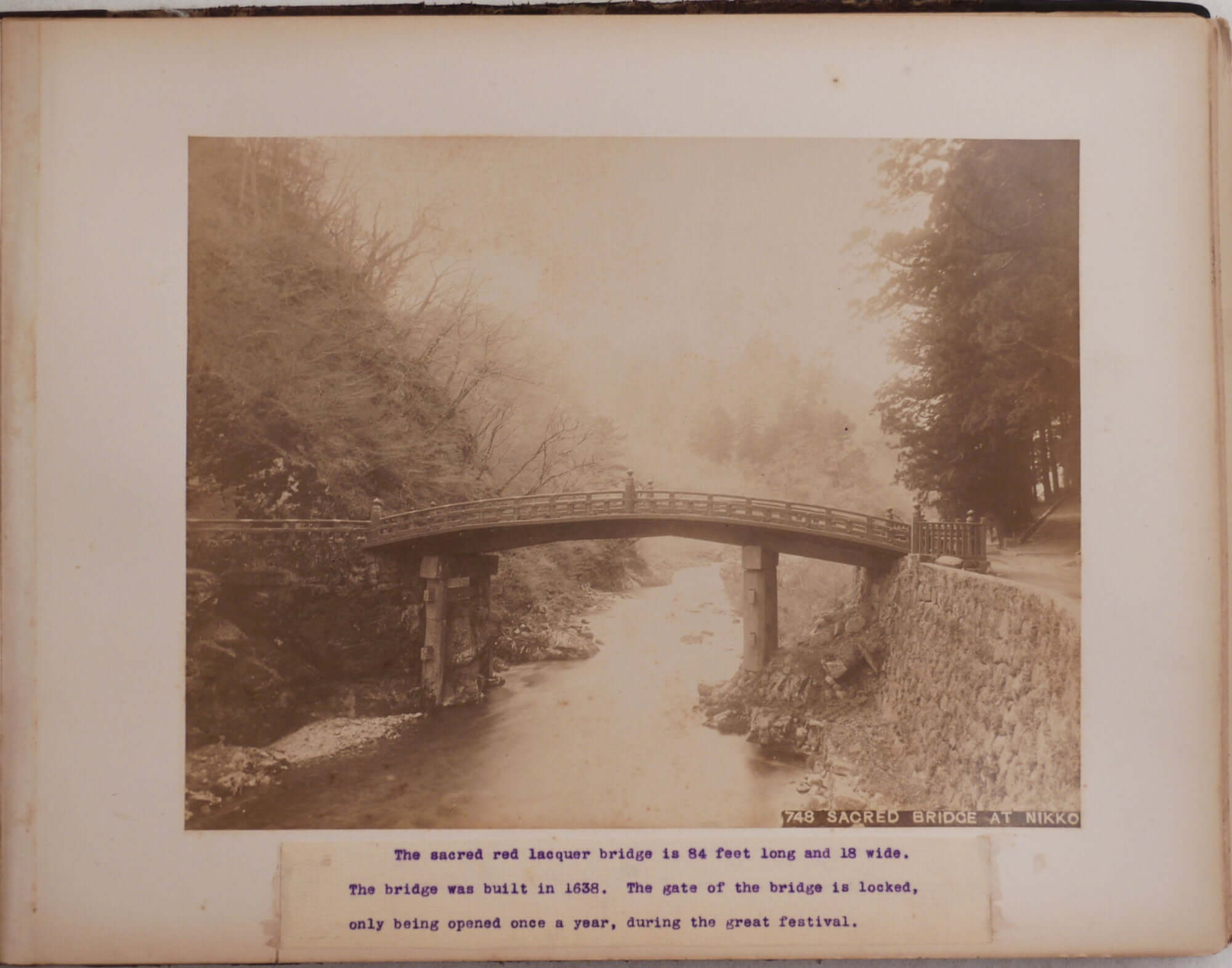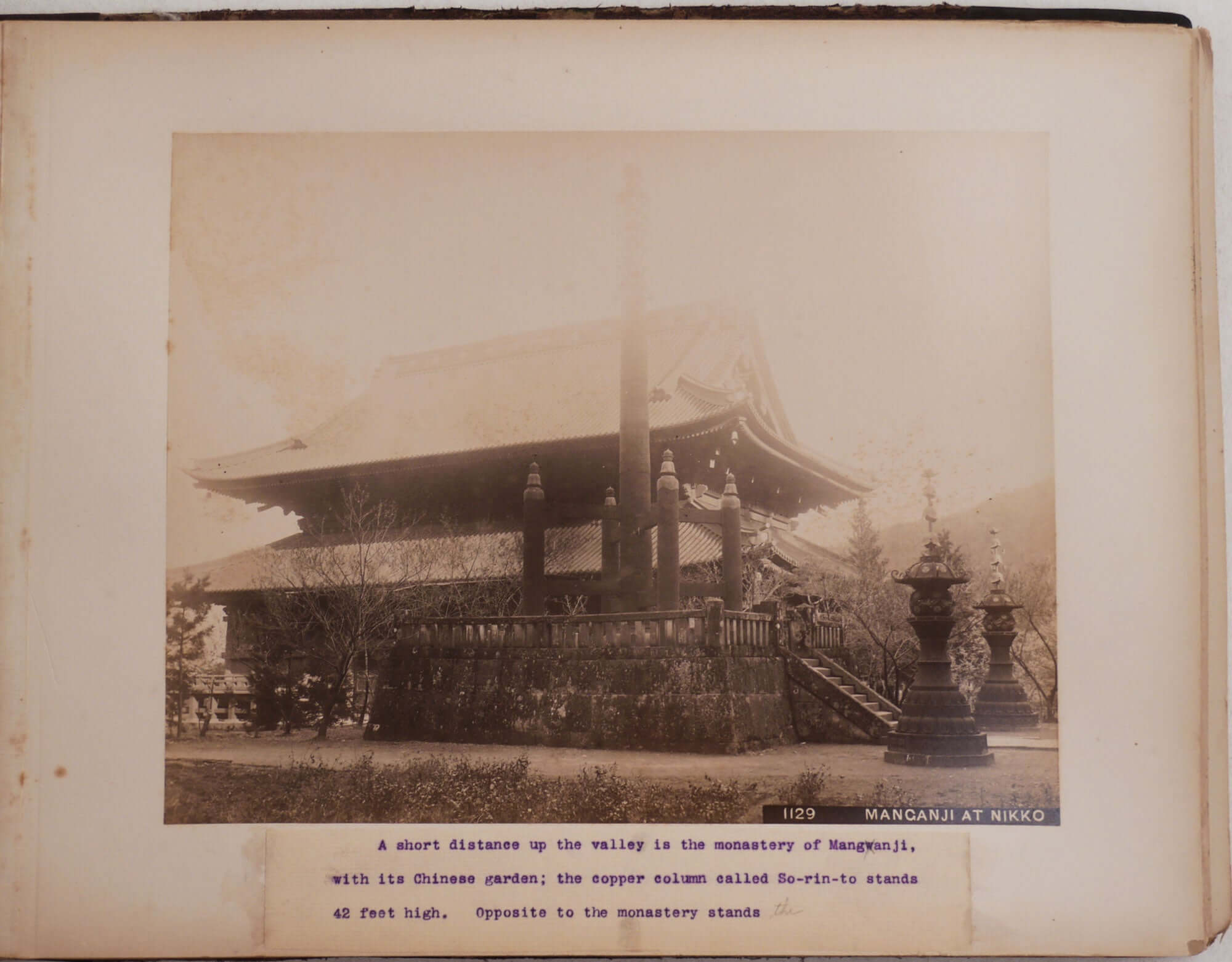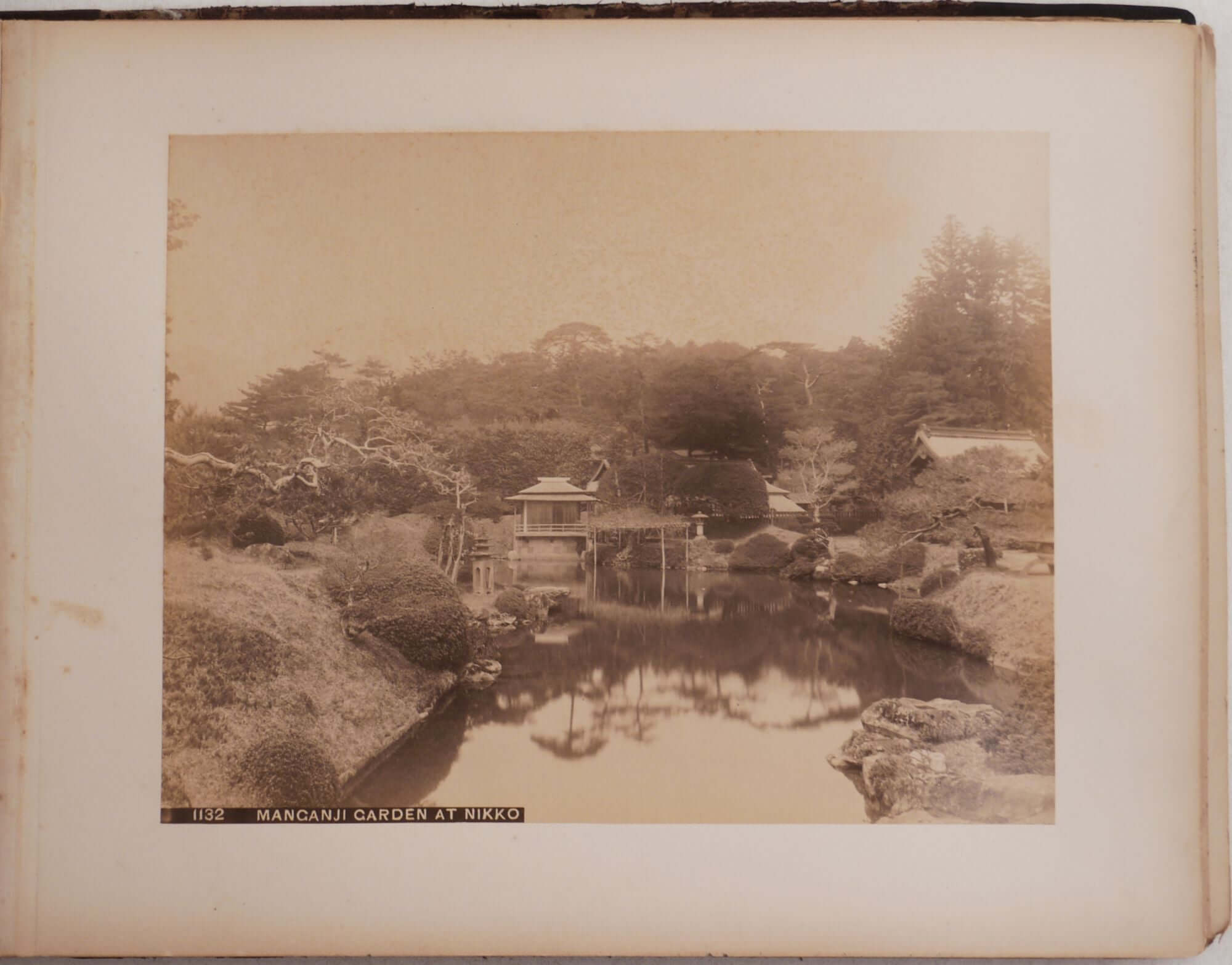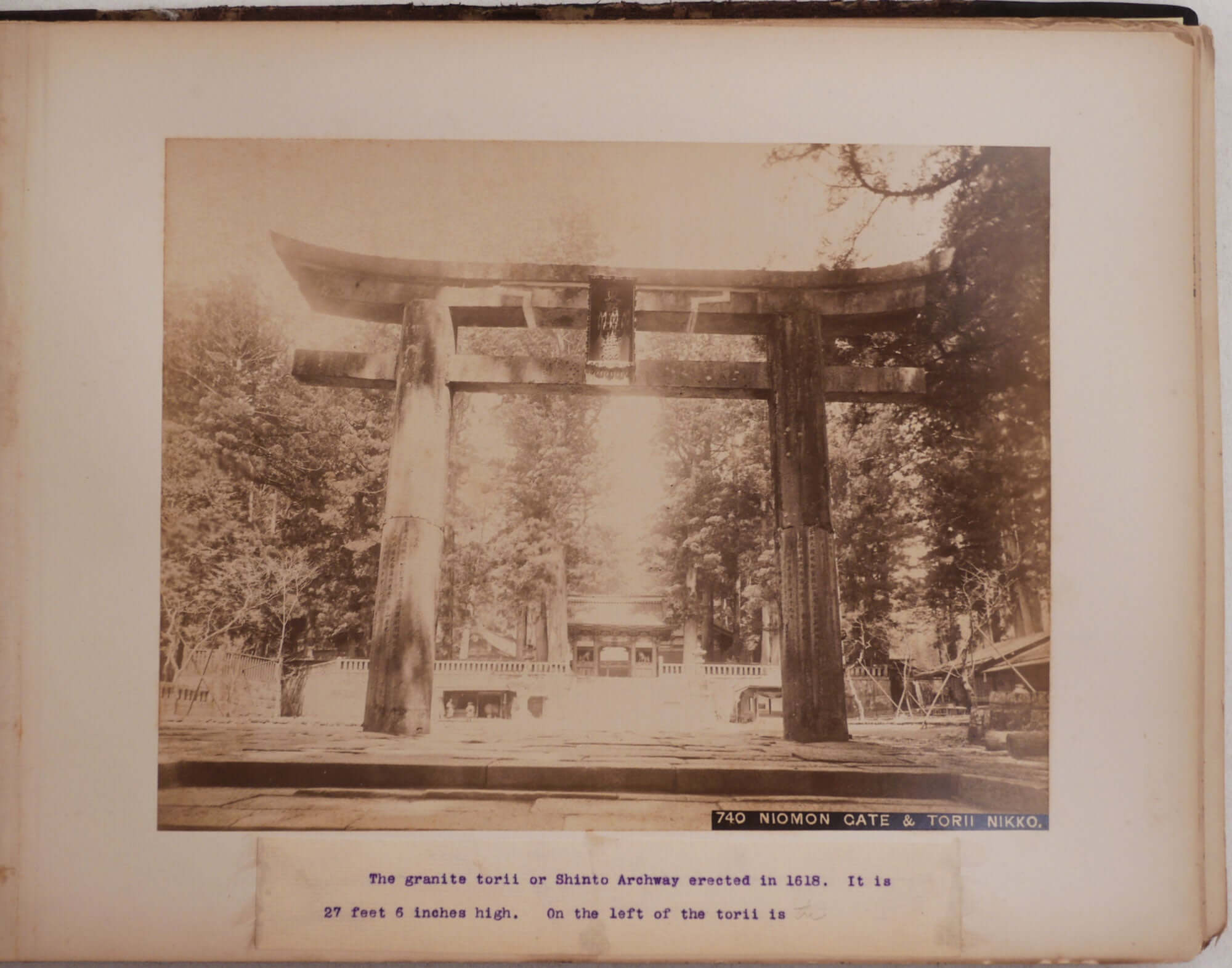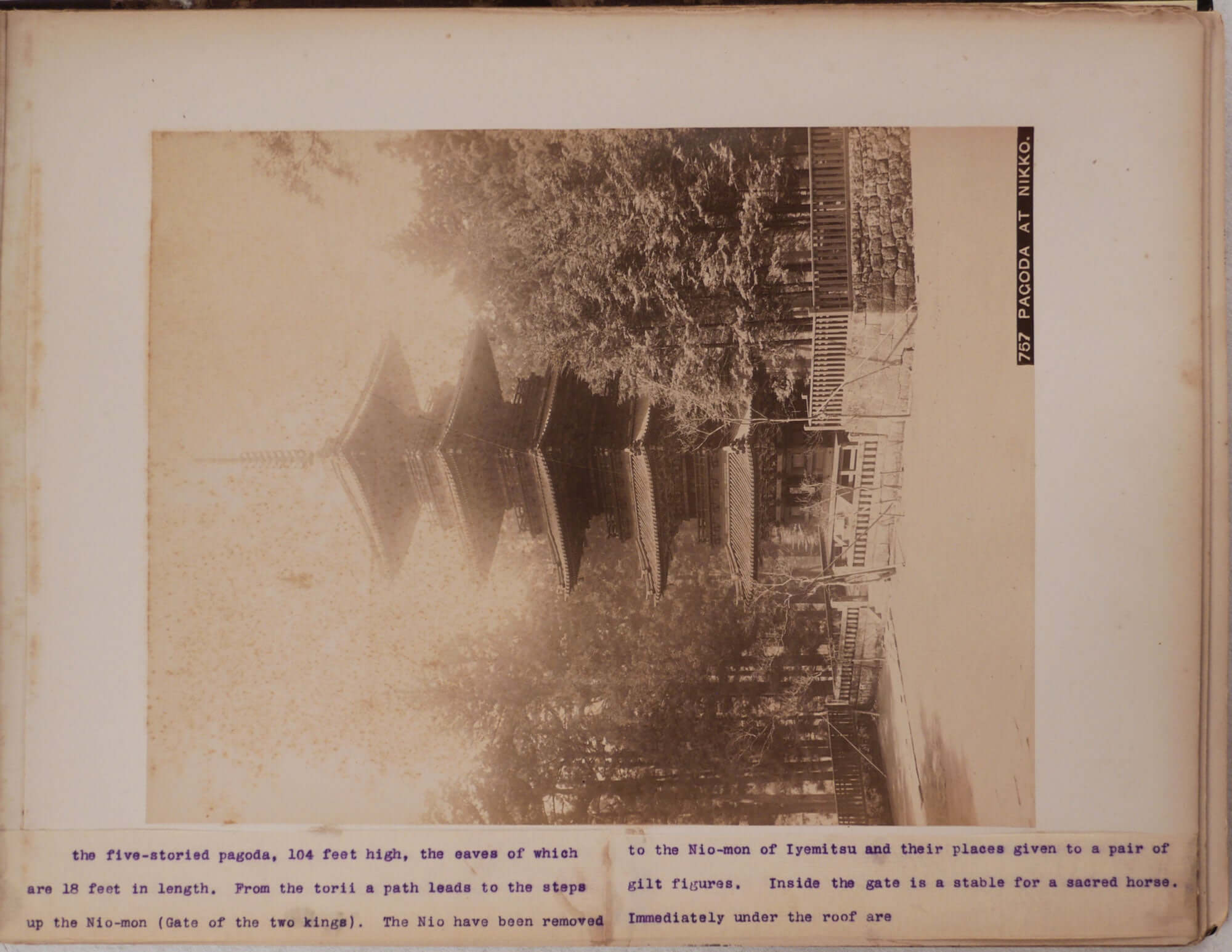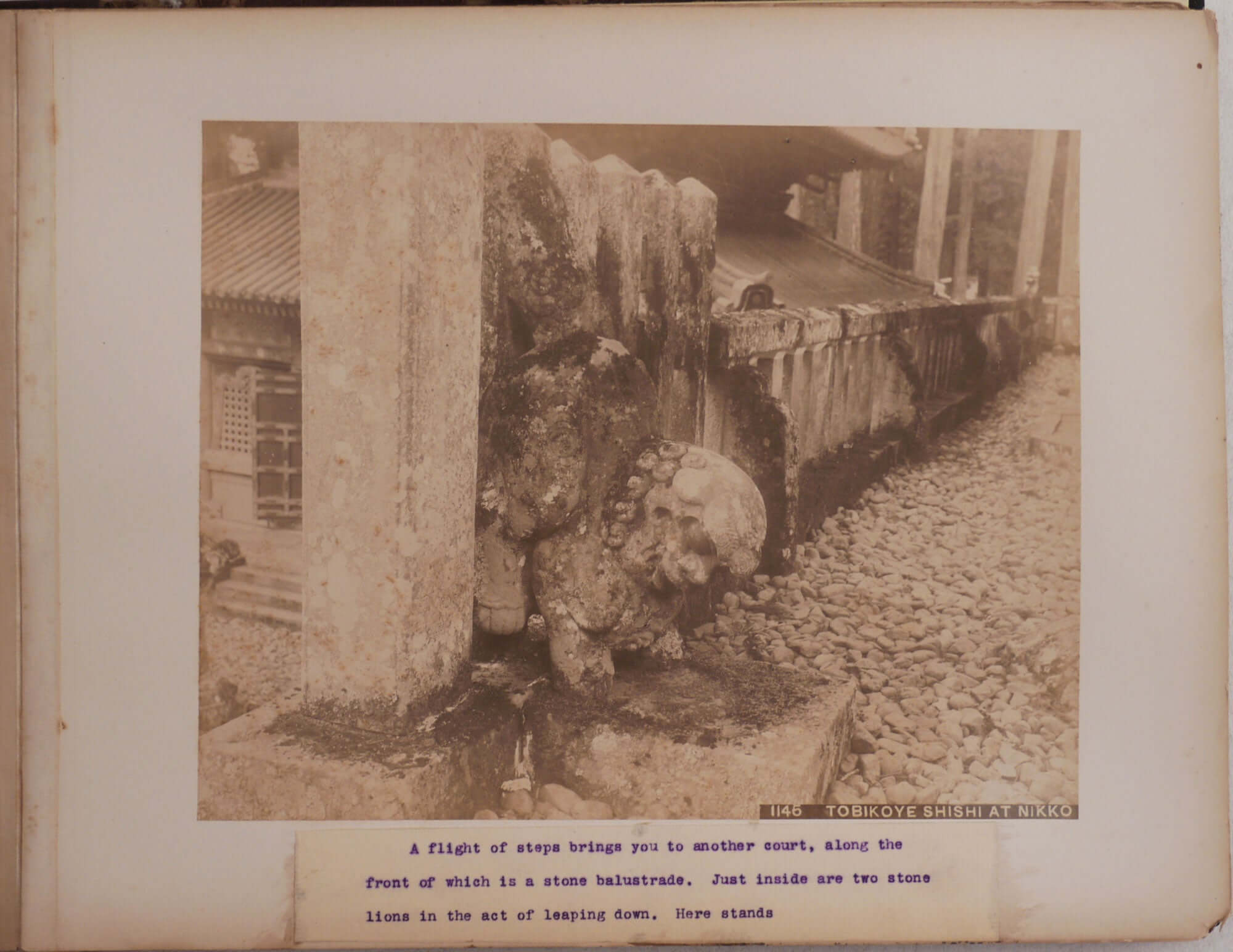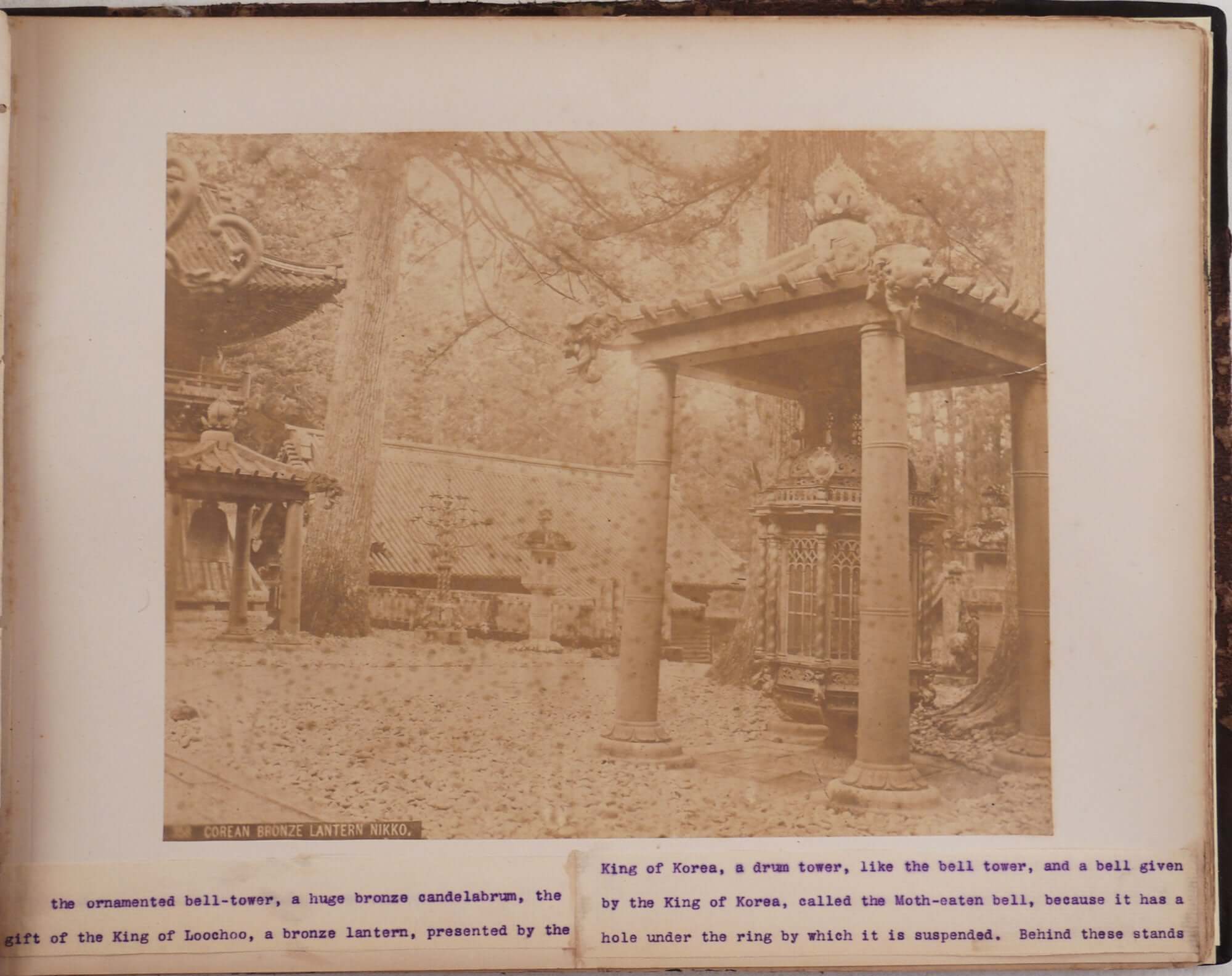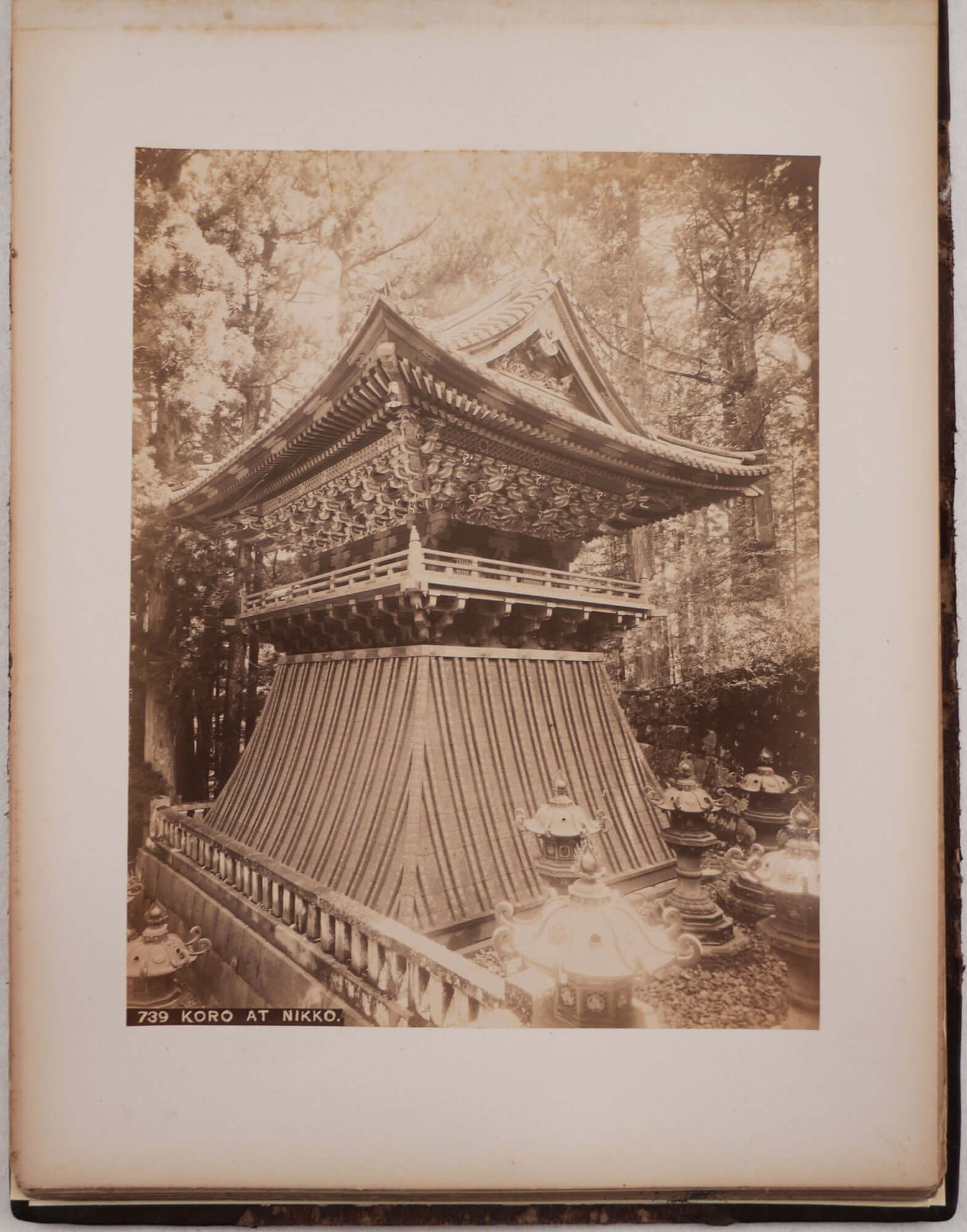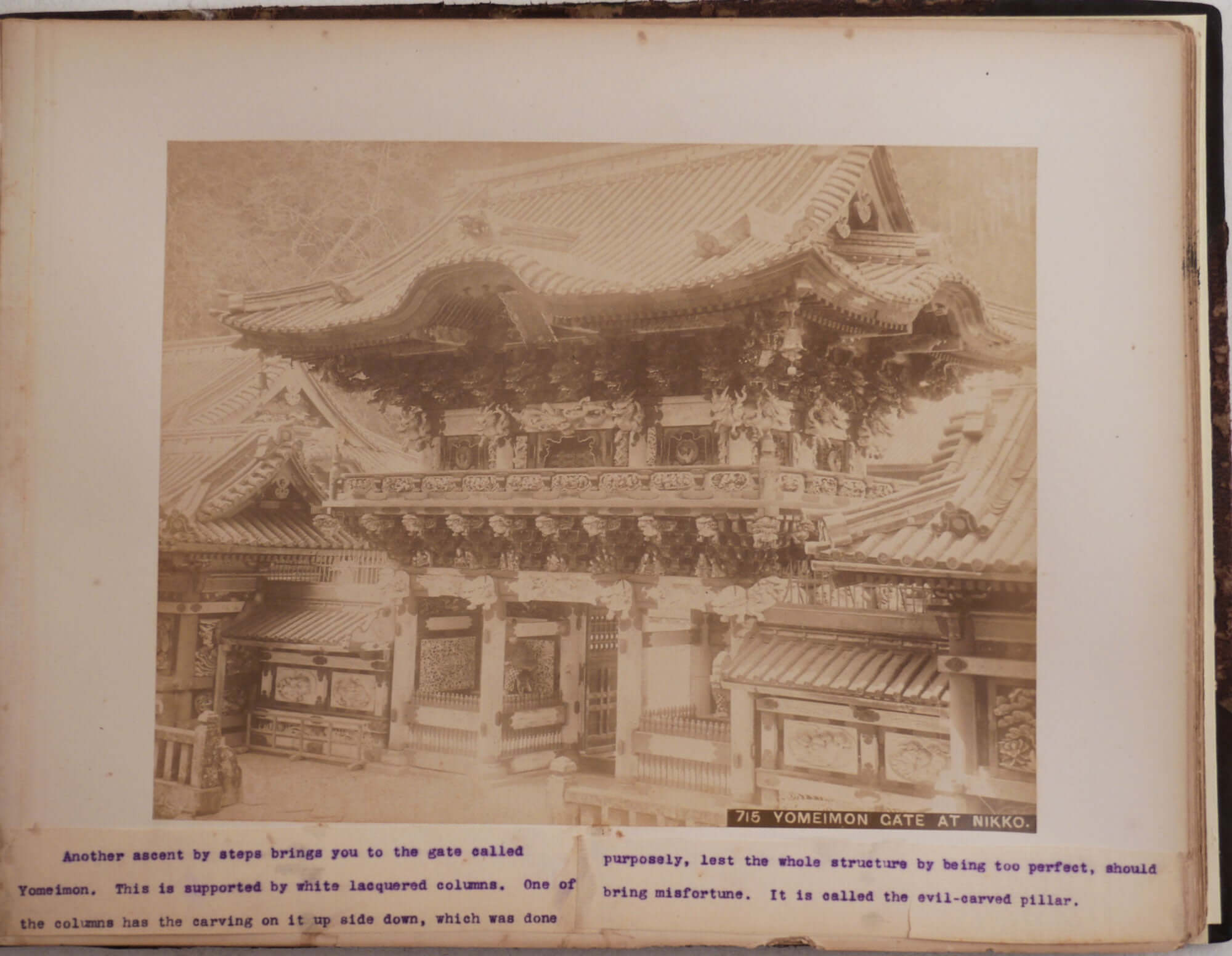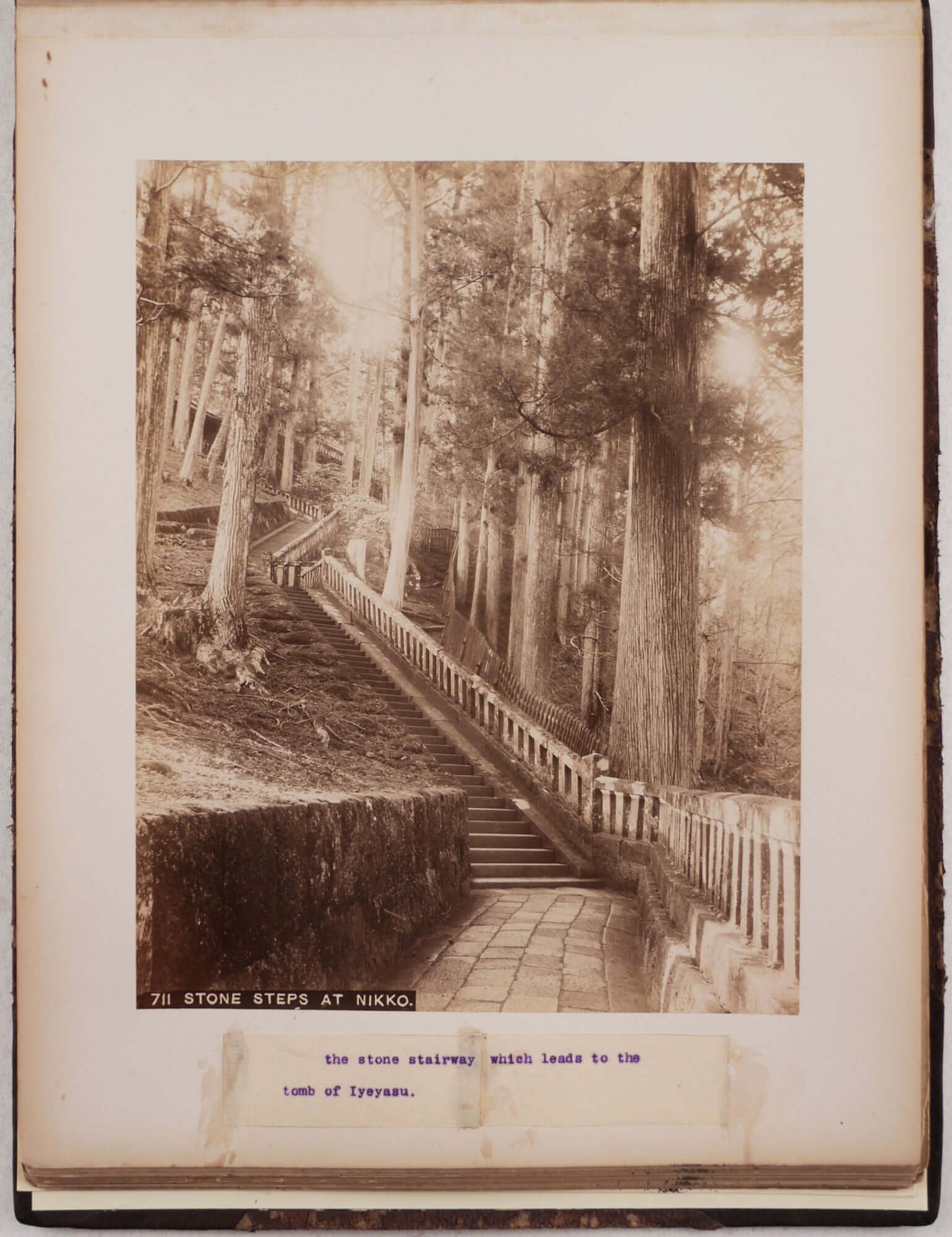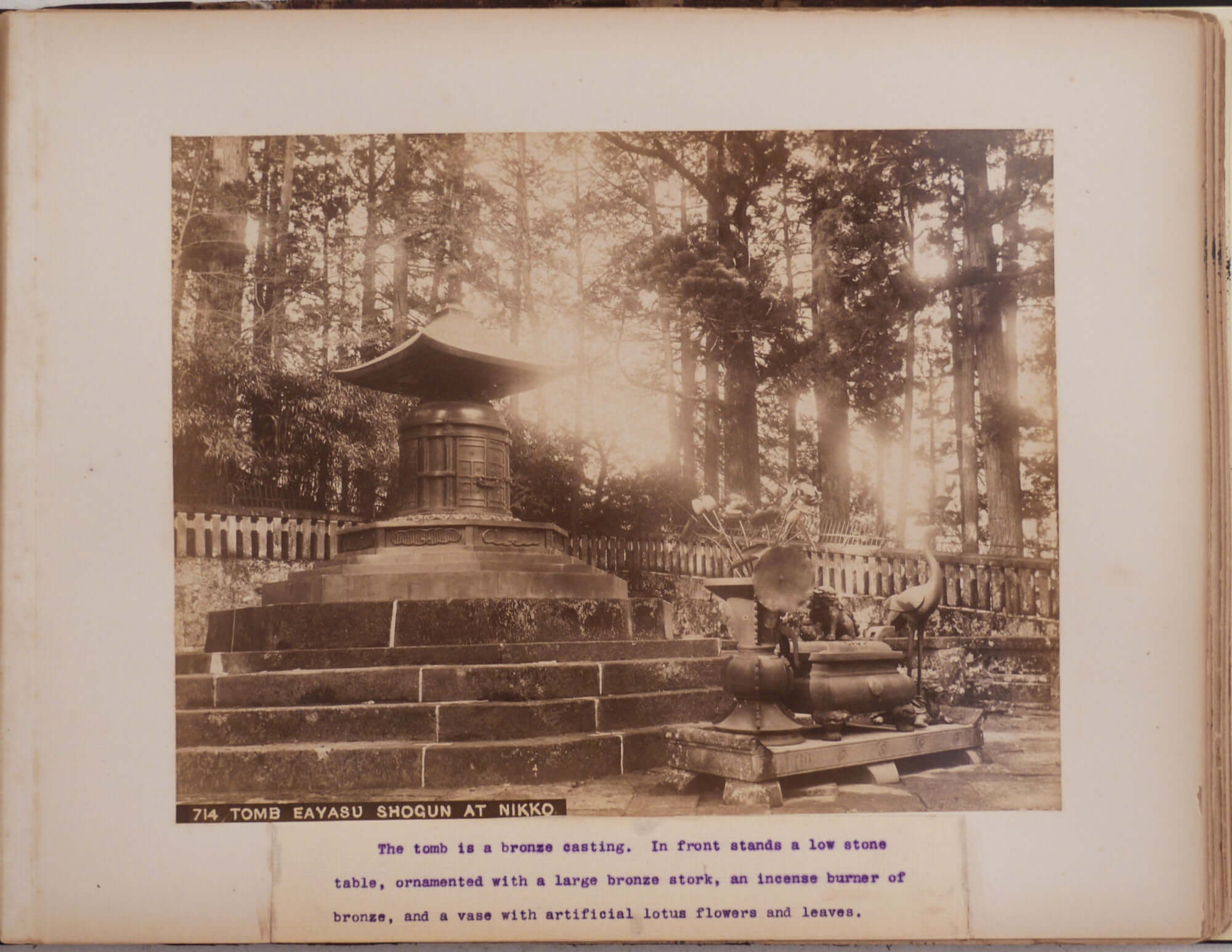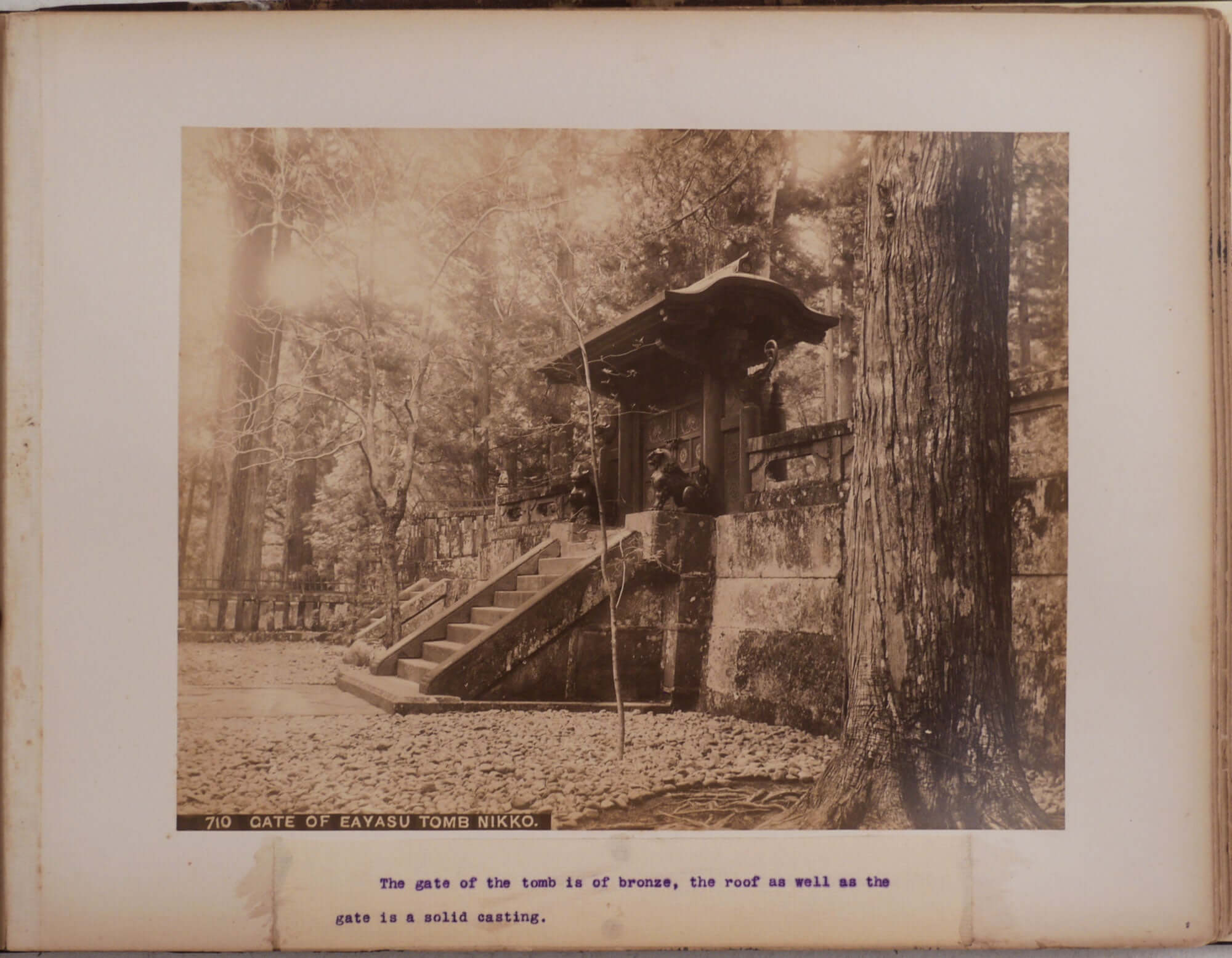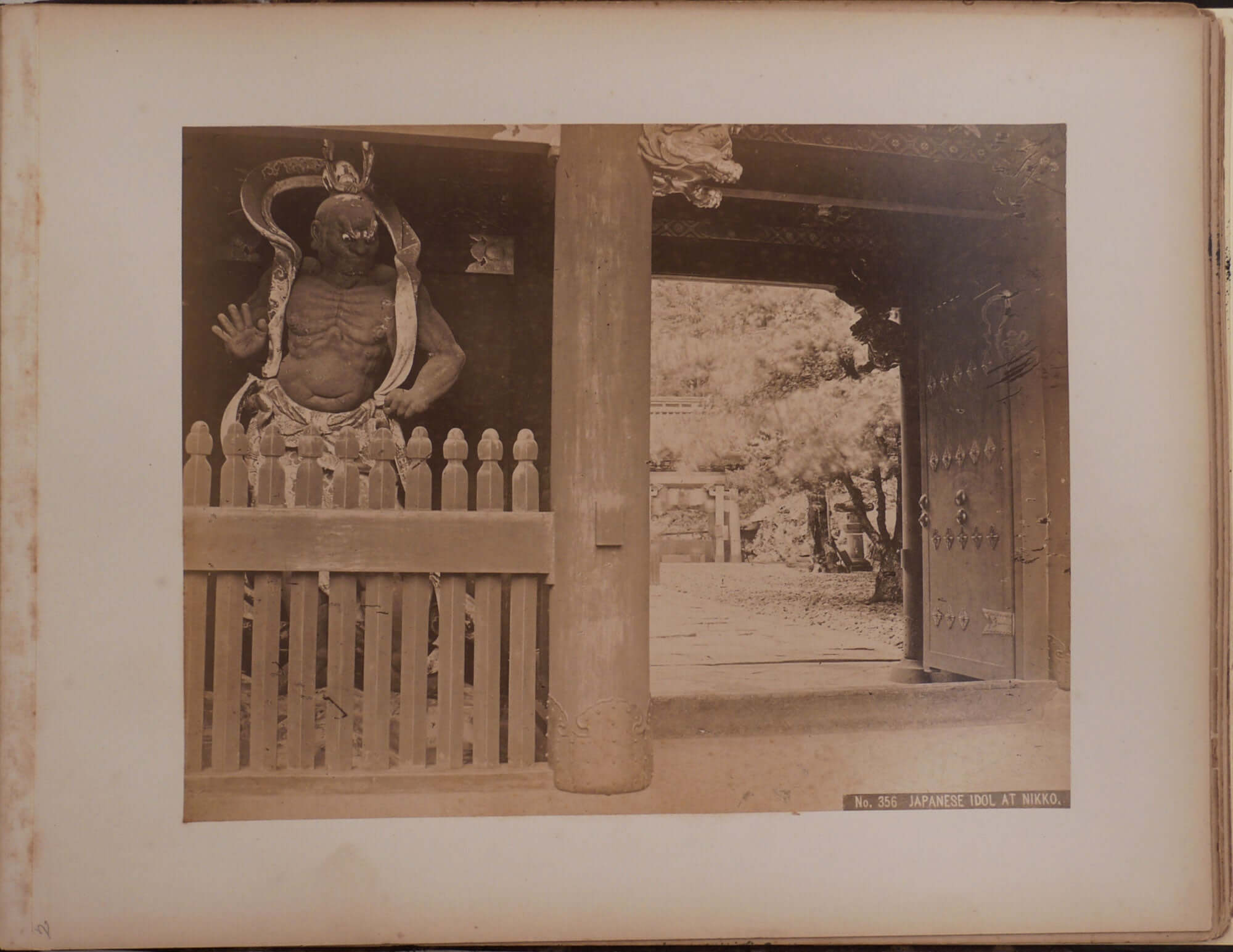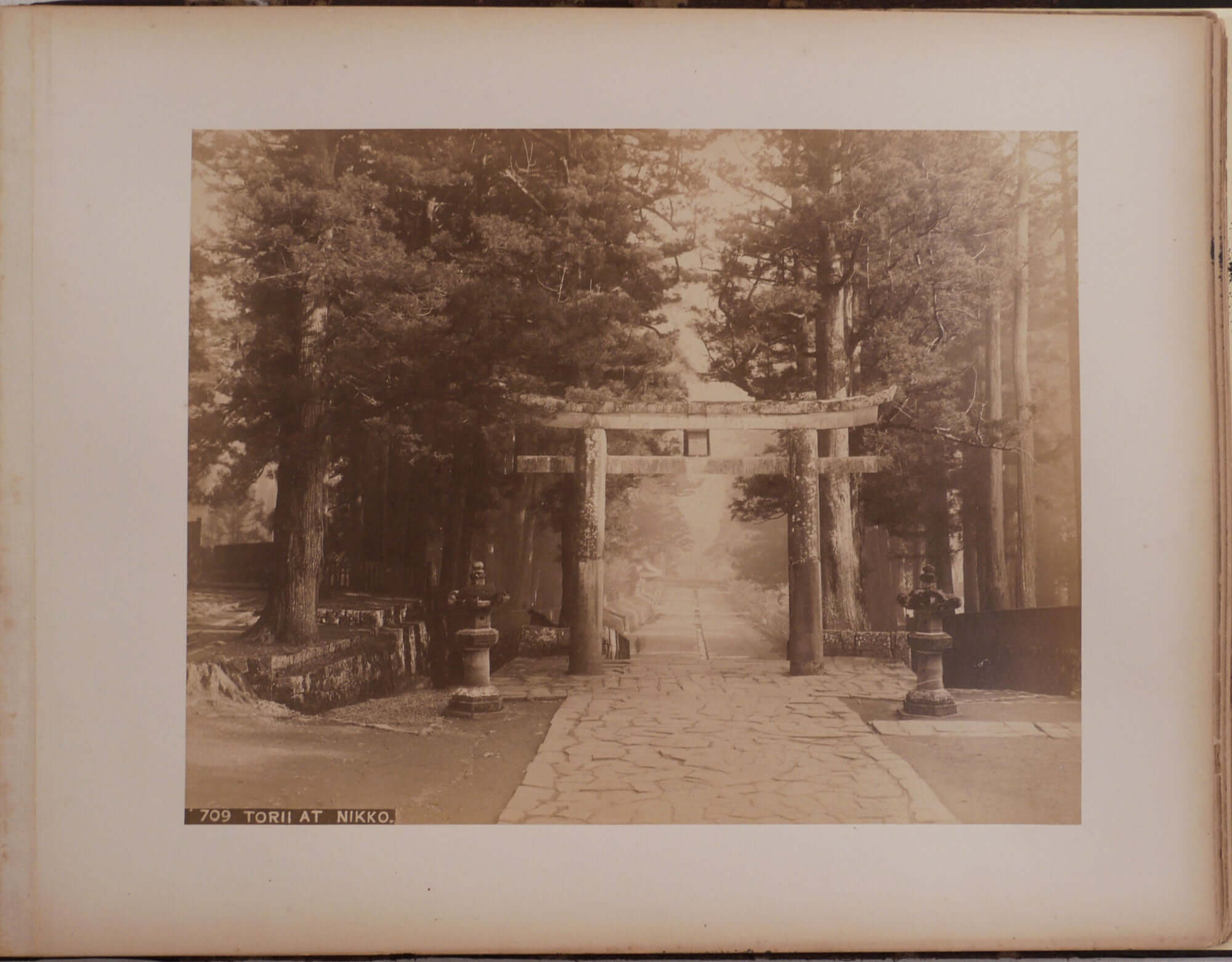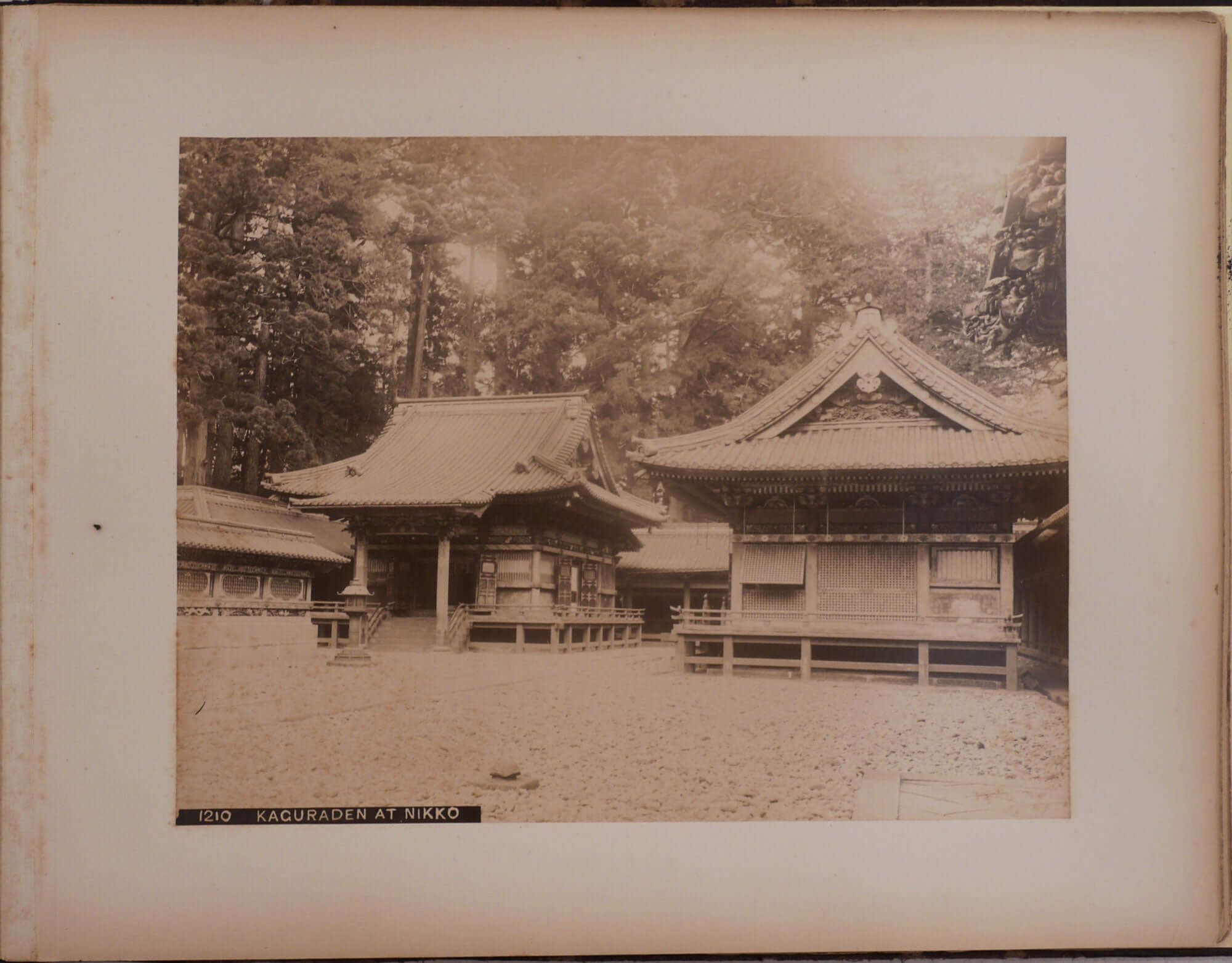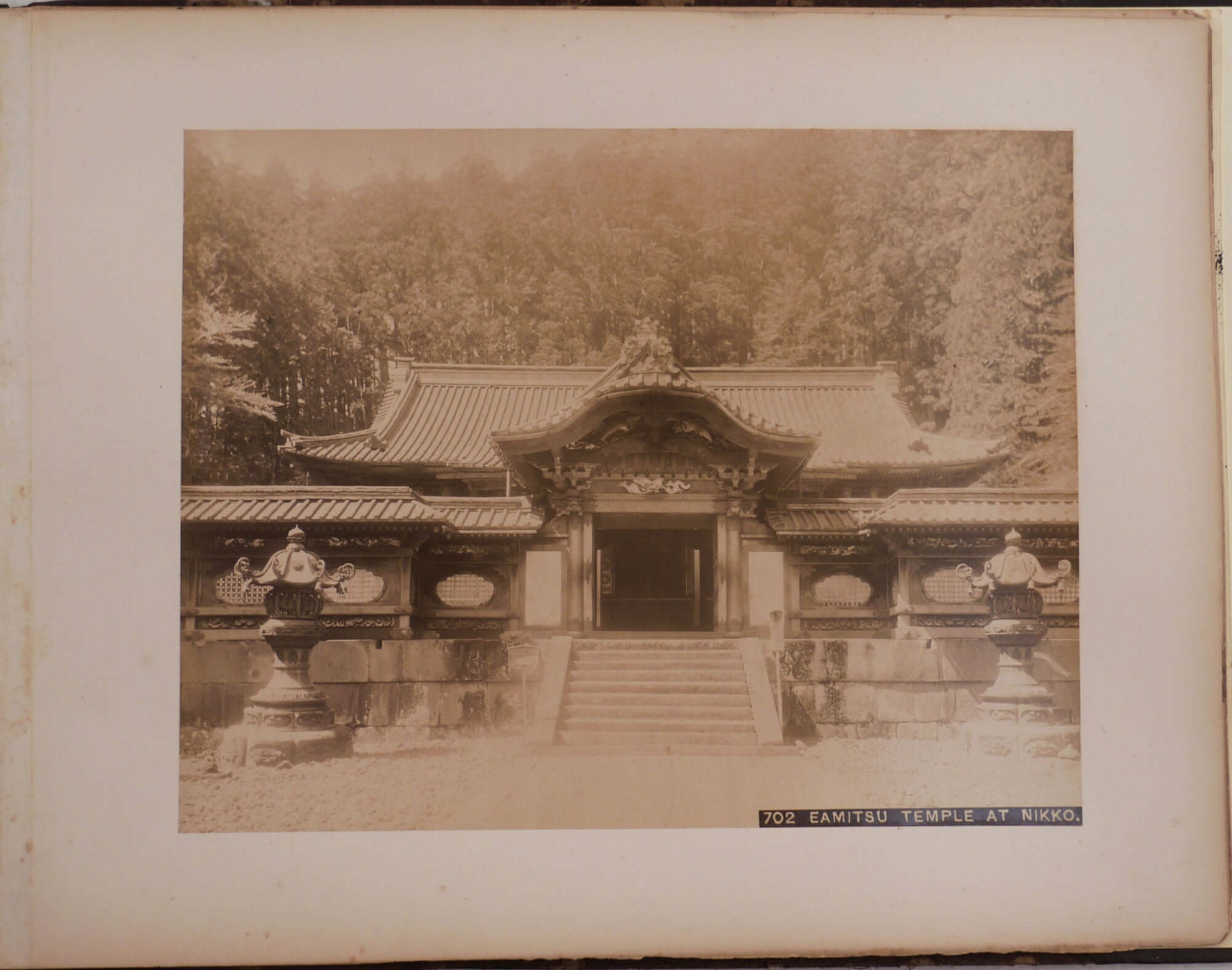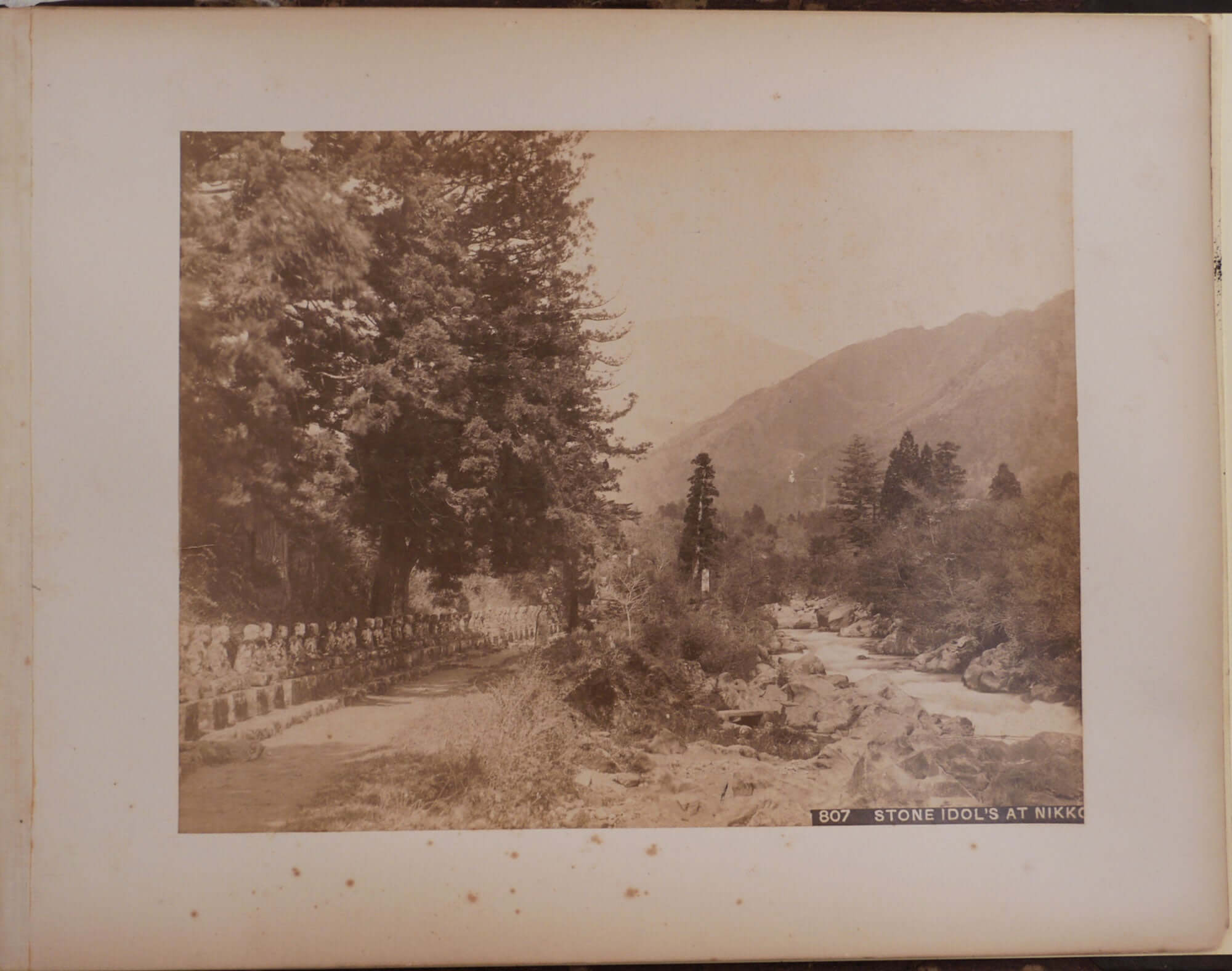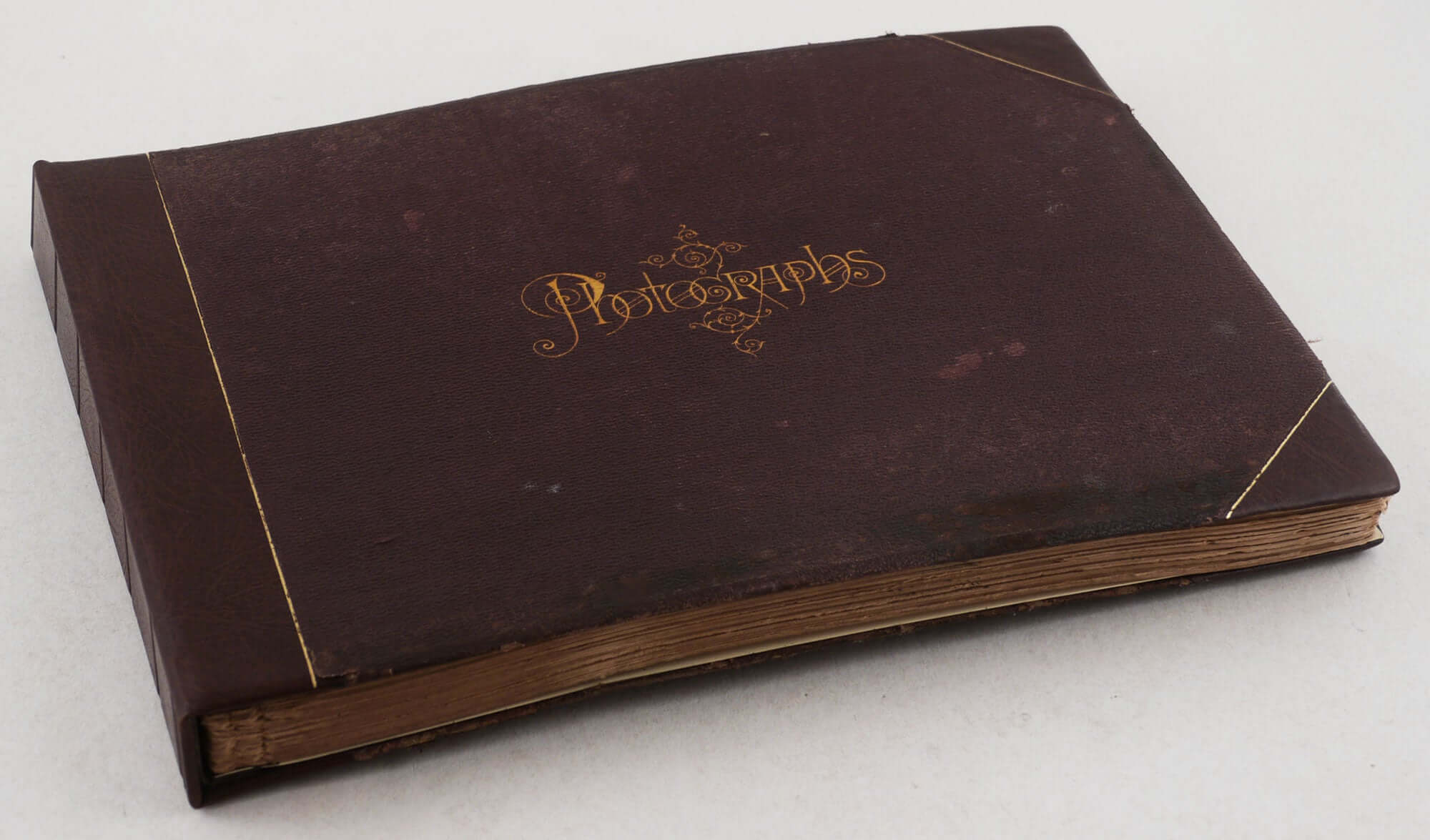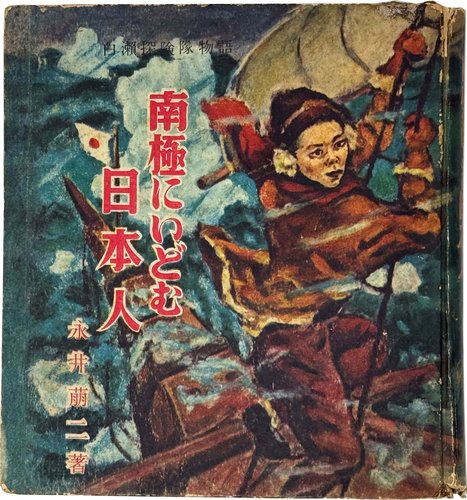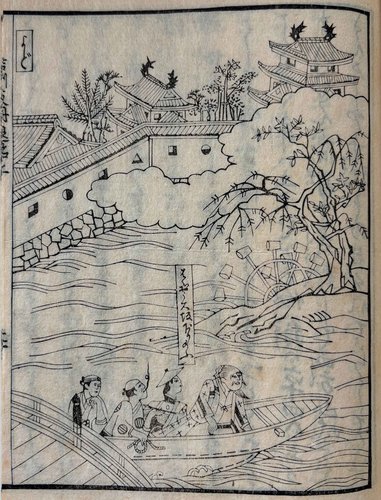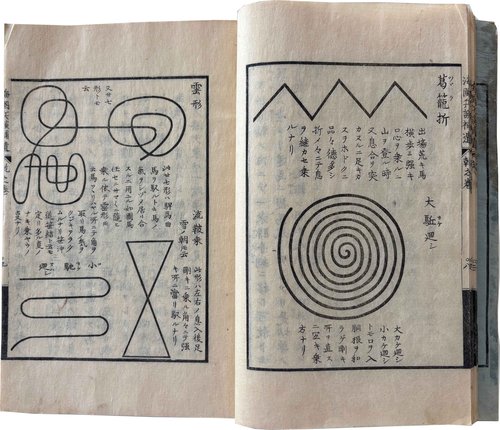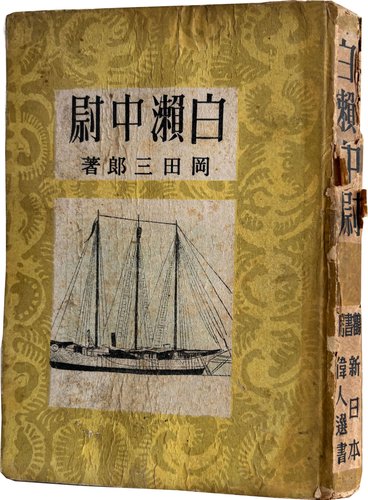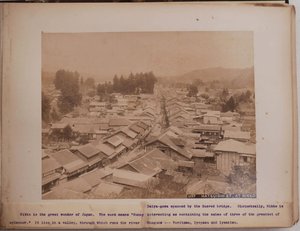
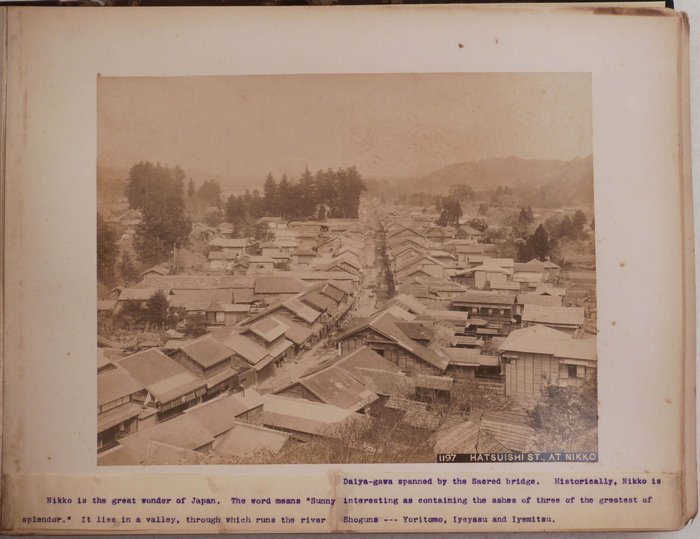

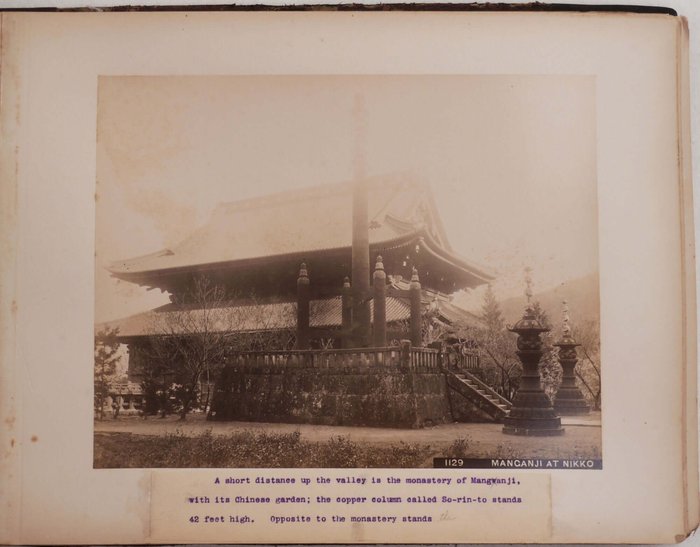
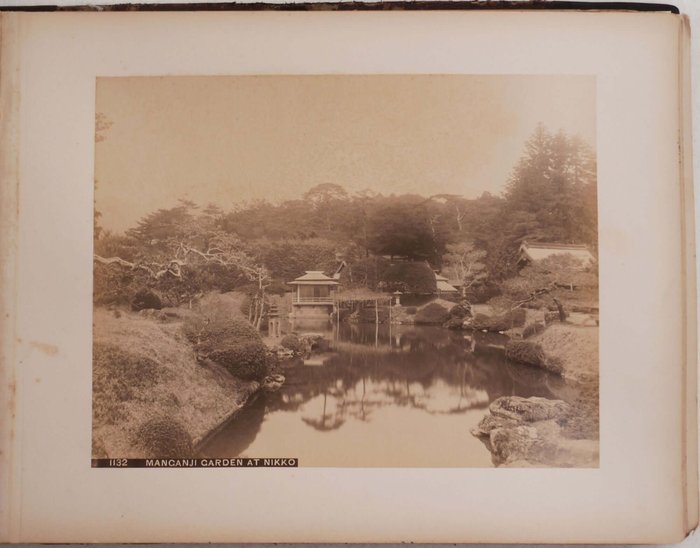


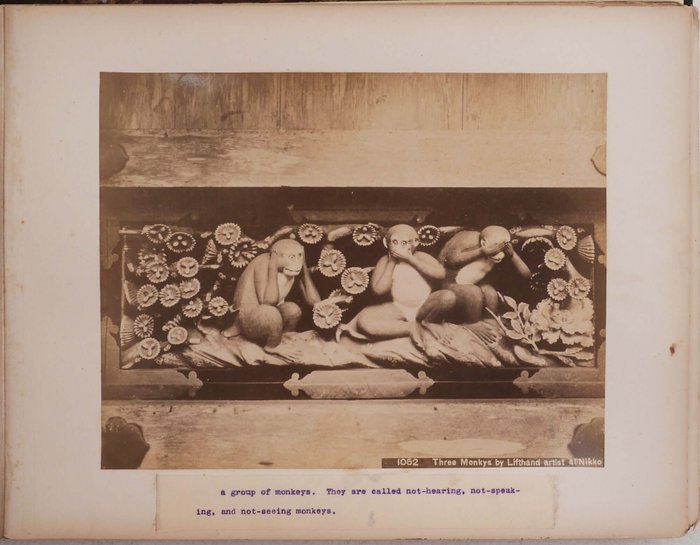
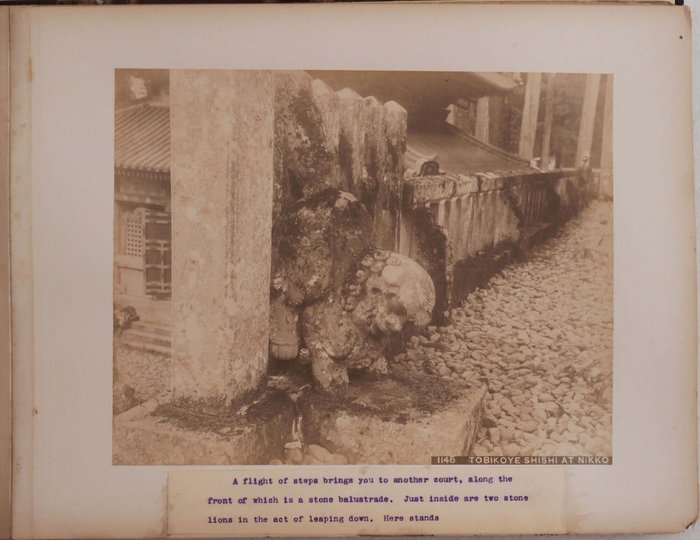
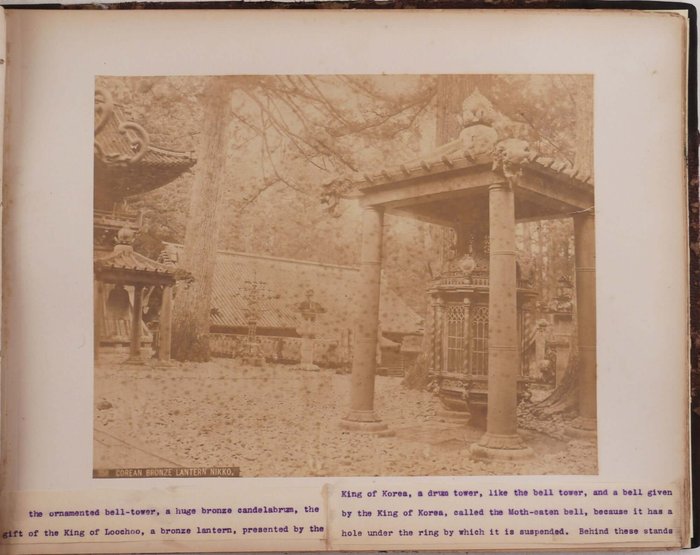
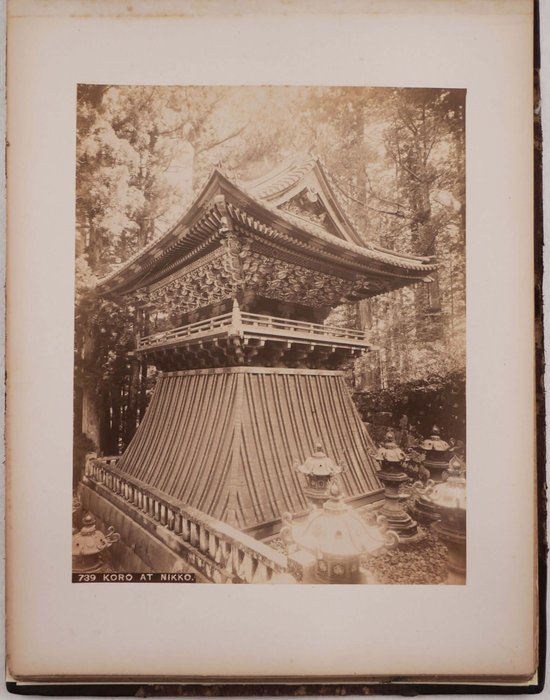
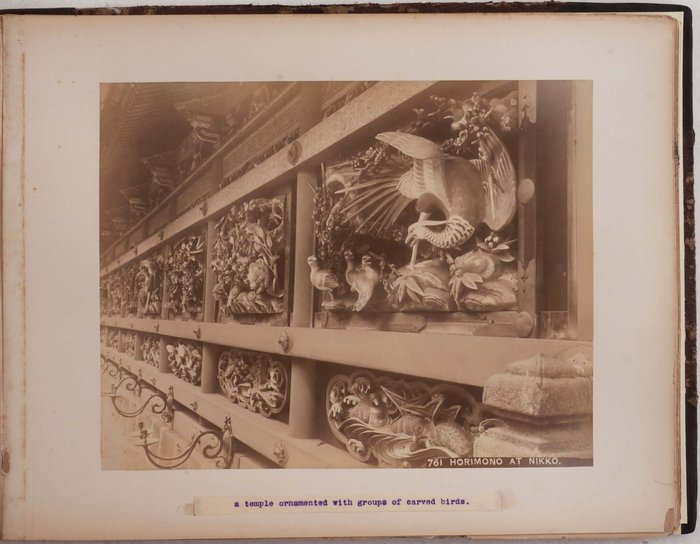
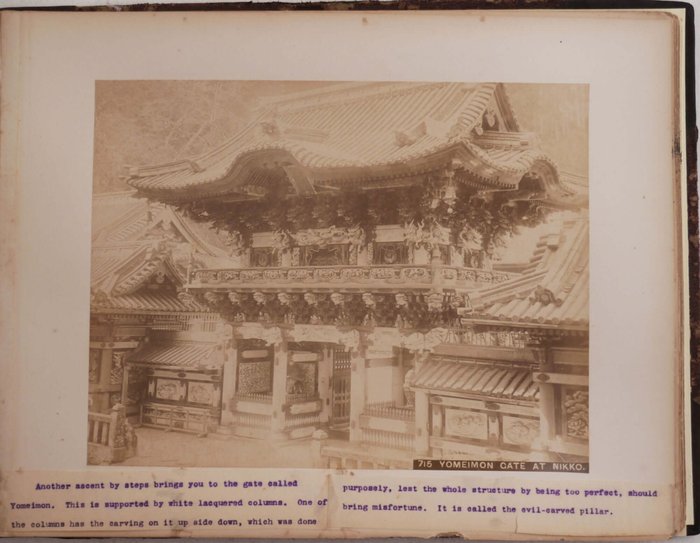
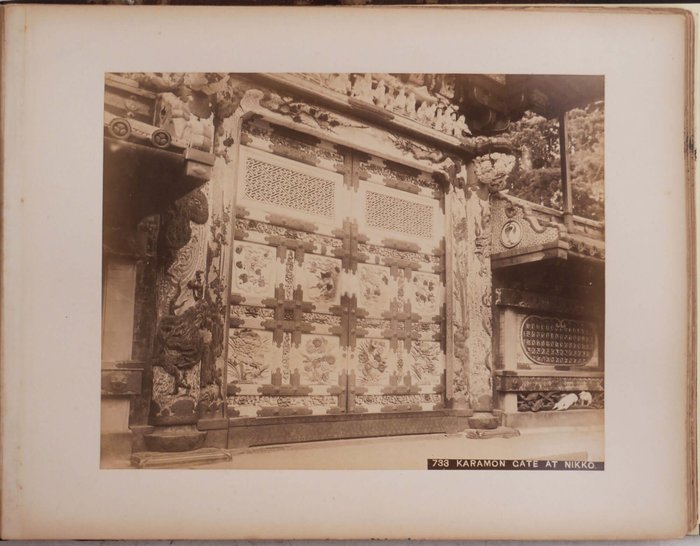


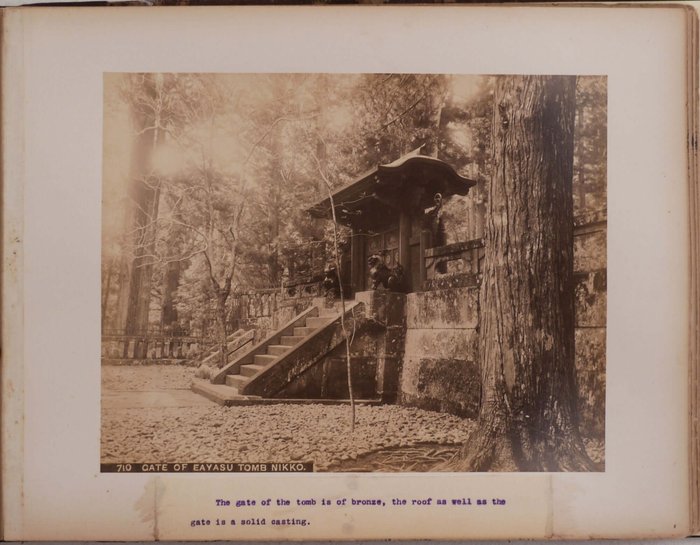
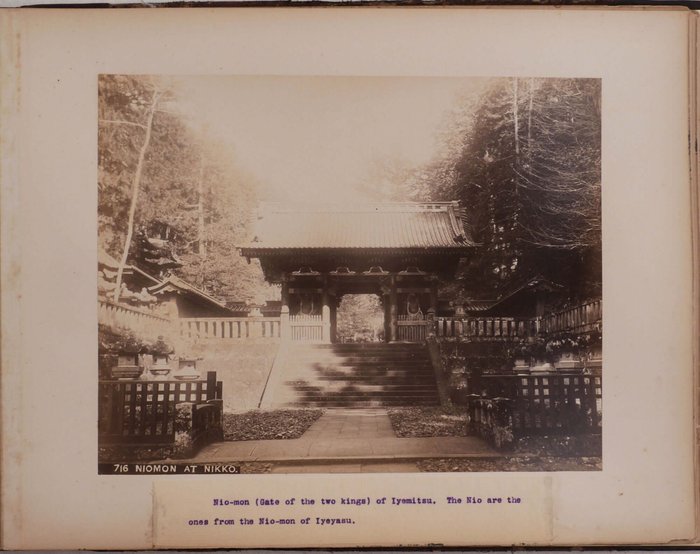
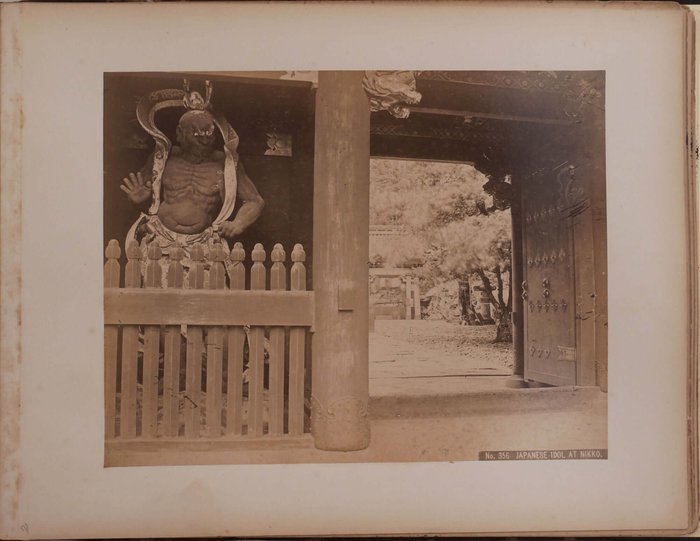
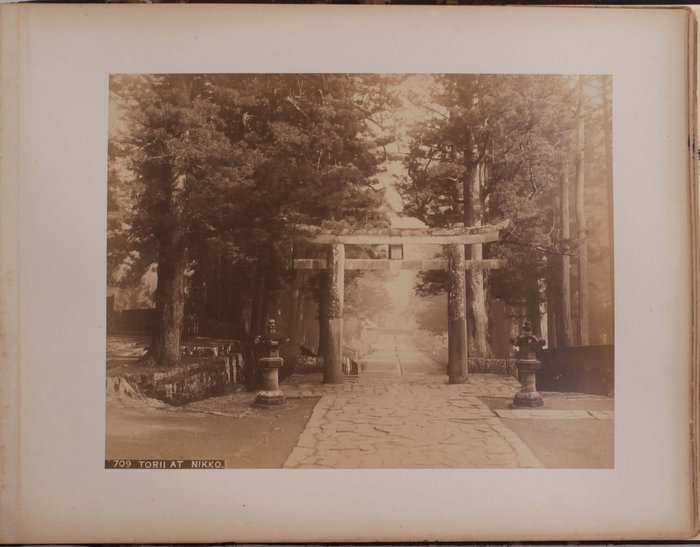
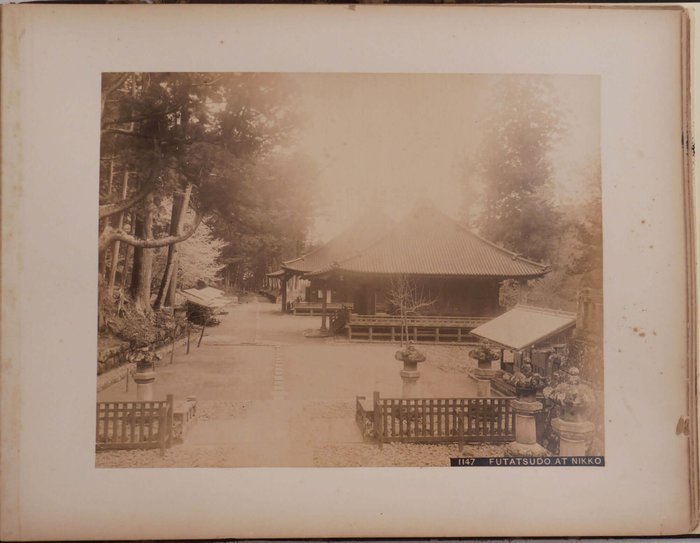


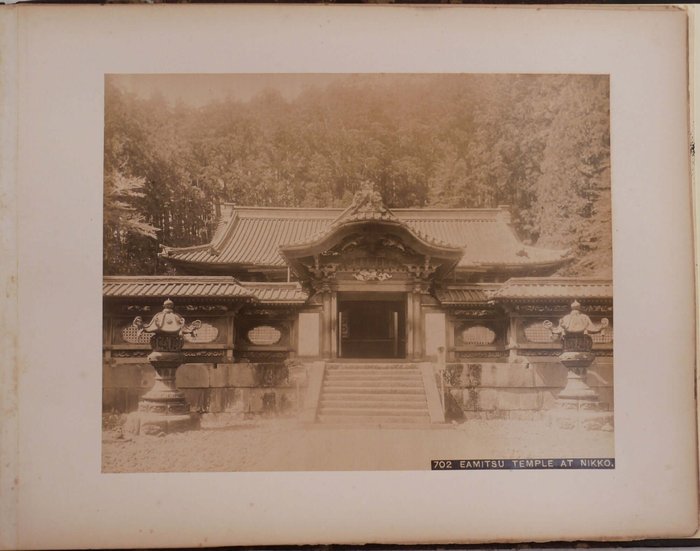
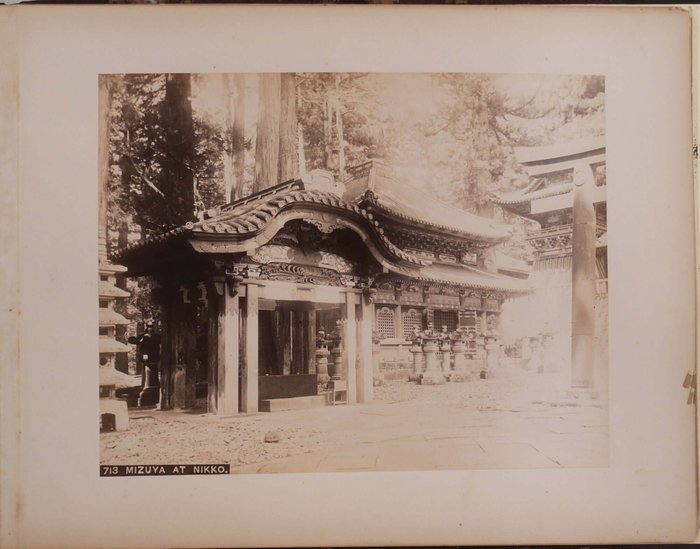



#PC63
ca. 1890
Oblong Folio (ca. 28x38 cm). 26 leaves. 26 large albumen photographs ca. 20,5x26 cm (8 x 10 ¼ in) mounted on 26 stiff cardboard leaves. All photographs numbered and captioned in negative, 15 photographs with custom made labels with type written text. Period brown gilt lettered half morocco with cloth boards neatly rebacked and re-cornered in style with new endpapers. A few photos mildly faded, but overall a very good album with interesting photos
The album includes early large photographs of the main sites of Nikko, a mountainous resort approximately 140 km north of Tokyo, which became especially popular among foreign visitors in the end of the 19th century. The photographs show Hatsuishi Street (numbered 1197), the Sacred Bridge (748) leading to the Futarasan Shrine, Manganji Garden (1129 and 1132), and a large group of views of the Tosho-gu Shrine. The latter includes pictures of several gate: Ishidorii (740), Yomeimon (715 and 729), Karamon (733), Niomon (716), Torii (709), Eaimitsu (427); views of Five-storied pagoda (757), Eaimitsu temple (702), tomb of Iyeyasu shogun (710, 711, 714); a sculpture of Three Wise Monkeys (1052), stone lions of Tobikoye Shishi (1145), Korean bronze lantern (358), lavish wall carvings (761), buildings of Koro (739), Futatsudo (1147), Kaguraden (1210), Mizuya (713), an alley with stone idols (807) et al.
"In 1890 first railway connection to Nikko was provided by the Japanese National Railways, which was followed by the Tobu Railway in 1929 with its Nikko Line" (Wikipedia). Nowadays Nikko is also a popular destination for Japanese and international tourists, famous for its ancient temples, tombs of great Japanese shoguns Tokugawa Ieyasu and Tokugawa Iemitsu, the Futarasan Shinto Shrine and numerous hot springs. The shrine of Nikko Tosho-gu, Futarasan Shrine, and a Buddhist temple complex Rinno-ji now form the UNESCO World Heritage Site Shrines and Temples of Nikko (Wikipedia).

